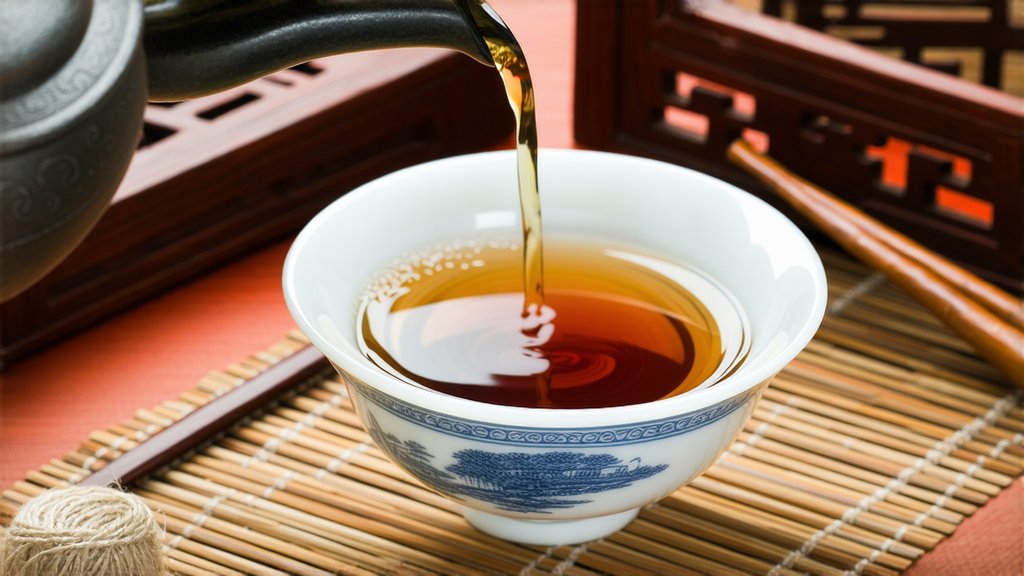
Liu Baocha, a gem within the vast expanse of China's dark tea varieties, holds a special place in the hearts of tea connoisseurs worldwide. This unique tea, hailing from the Guangxi Zhuang Autonomous Region of China, has been cherished for centuries due to its distinctive flavor profile and numerous health benefits. In this comprehensive exploration, we delve into the historical background, types, production process, and tasting techniques of Liu Baocha, shedding light on its enduring allure.
Historical Background
The origins of Liu Baocha can be traced back over a millennium, with its roots deeply embedded in the rich cultural tapestry of China. The earliest records of Liu Baocha date back to the Tang Dynasty (618-907 AD), where it was initially used as a medicinal tea. Over time, its reputation evolved, and by the Ming Dynasty (1368-1644 AD), it gained recognition for its unique taste and longevity. The name "Liu Bao" translates to "Six堡," referring to the six fortified villages in the Liu Bao area where the tea was traditionally produced and aged.
Types of Liu Baocha
Liu Baocha comes in various forms, each offering a distinct experience to the palate. The primary categories include:
-
Sheng (Raw) Liu Baocha: Also known as traditional Liu Baocha, Sheng tea undergoes natural fermentation over time, developing complex flavors as it ages. It is prized for its potential to transform and improve with proper storage.
-
Shou (Ripe) Liu Baocha: This category involves a controlled post-fermentation process akin to Pu-erh tea, accelerating the aging process. Shou Liu Baocha offers a mellower taste compared to its raw counterpart, appealing to those who prefer a milder brew immediately.
-
Single-Bud Liu Baocha: Made exclusively from the tender buds of the tea plant, this variety is considered a luxury item due to its rarity and delicate flavor profile.
-
Compressed Liu Baocha: Often formed into bricks or cakes, compressed Liu Baocha is convenient for storage and aging. These shapes also facilitate the tea's fermentation process.
Production Process
The art of making Liu Baocha is a testament to China's tea-making heritage. The process begins with the careful selection of Camellia sinensis leaves, typically sourced from old-growth tea trees in the mountainous regions of Guangxi. After harvesting, the leaves undergo several steps:
-
Withering: Fresh leaves are spread out to wilt under the sun or in shade, reducing moisture content and preparing them for further processing.
-
Fixation: The withered leaves are then heated to halt oxidation, preserving their green color and locking in aromas.
-
Rolling: The fixed leaves are rolled to release juices and form strips or pellets, depending on the desired final product.
-
Fermentation: For Sheng Liu Baocha, the leaves are left to age naturally, exposed to the elements and microbial activity that impart depth and complexity. Shou Liu Baocha undergoes a more controlled fermentation process, often involving piling the leaves to encourage microbial growth and accelerate aging.
-
Drying and Storage: Once fermented to the desired level, the tea is dried and may be further aged in specific conditions to enhance its character. Proper storage is crucial for the development of Liu Baocha's unique flavors.
Tasting Techniques
To truly appreciate the nuances of Liu Baocha, one must adopt a mindful approach to tasting. Here are some guidelines for an optimal Liu Baocha experience:
-
Preparation: Use a Yixing clay teapot or a Gaiwan, both traditional vessels that complement the tea's earthy notes. Rinse the teapot with boiling water to warm it up.
-
Water Quality: Use fresh, filtered water at a temperature between 95-100°C (203-212°F) to extract the full spectrum of flavors from the tea.
-
Leaf-to-Water Ratio: A general rule of thumb is to use approximately 5 grams of Liu Baocha per 150 ml of water. Adjust according to personal preference and the type of Liu Baocha being brewed.
-
Brewing Time: For the first infusion, allow the tea to steep for about 10-15 seconds. Subsequent infusions can be progressively longer, as Liu Baocha is resilient and can yield multiple delicious brews.
-
Observation: Pay attention to the liquor's color, clarity, and aroma before sipping. Notice how the tea's appearance evolves with each infusion.
-
Tasting: Sip slowly, allowing the tea to coat your palate fully. Note the initial impressions, mid-notes, and aftertaste. Liu Baocha is known for its woody, earthy flavors intertwined with subtle sweetness and hints of spice.
-
Appreciation: Take time to appreciate not just the taste but also the texture and mouthfeel of the tea. A well-crafted Liu Baocha should have a smooth, velvety quality that lingers pleasantly.
In conclusion, Liu Baocha stands as a testament to China's profound tea culture, embodying centuries of tradition, craftsmanship, and a deep connection to nature. Its journey from leaf to cup is a narrative of transformation, patience, and appreciation for the finer things in life. As you embark on your own exploration of this remarkable tea, immerse yourself in its history, savor its diversity, and let each sip transport you to the misty mountains of Guangxi where it all began.